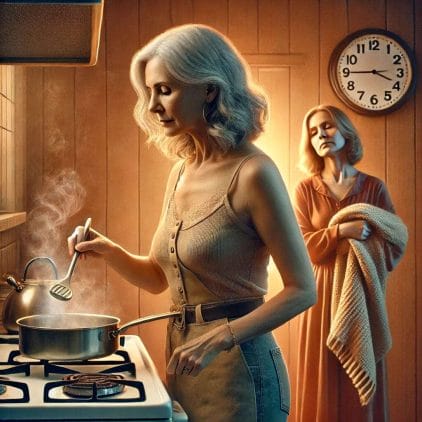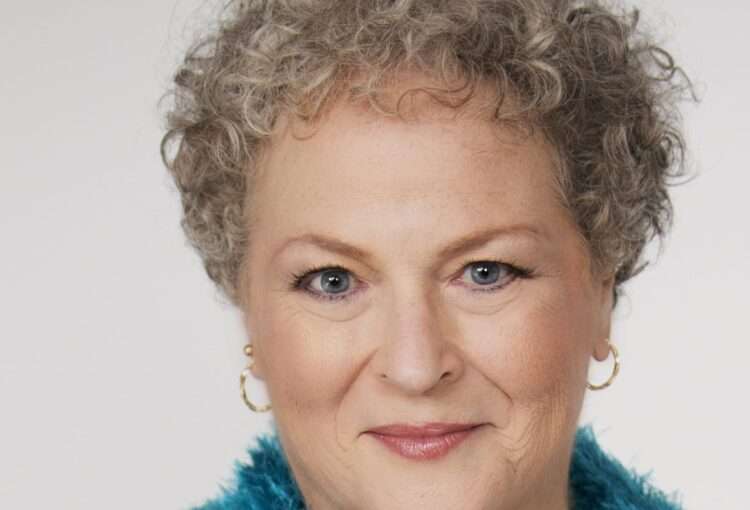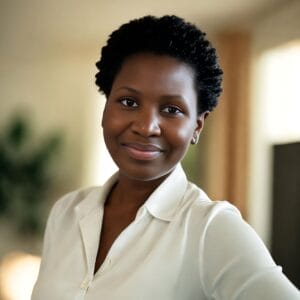
Emotional Independence: The Leadership Lesson I Didn’t Expect
- Author: L. Carol Scott
Only three years. That’s all it took to declare my emotional independence. Oh…and another 60+ years before that.
Believing I was “all cooked” as a human and a leader, I’d already claimed a new role: voice of wise experience. Then, rather suddenly, it became apparent I still had some cooking time to go, some growing up to do.
I’m confident I’m not alone in this experience, though it often feels that way. When have you suddenly realized you still carry some immature, unhelpful pattern around, like a child’s last scrap of an old security blanket? Do you find it a challenge to face that reality, let alone share your new awareness with others?
And here’s me, going public about my most recent realization. Please be kind.
Mirror Mommy on the Wall…

I see my life as a series of mirrors. They relentlessly and often lovingly reveal me to myself: a series of reflections, each clearer than the last. Through these changing images, I watch my evolution as a human, observe my development as a woman of a certain generation, and feel pride in my advancement as a servant leader.
Some mirrors are welcome, easing me into awareness of subconscious beliefs and motivations. Other reflections I resist, turning my head and refusing to look until my neck rebels.
Mostly, my mirrors are other humans, though a few dogs are in those ranks, too! Each one encourages a new nuance of emotional independence. They all reveal the recurring need for a personality makeover, as a bathroom mirror suggests a change of hairstyle or fewer accessories.
A little more than three years ago, I saw myself anew, reflected in the eyes of one who may be considered my stepmother.
Between Two Worlds: A Teenage Perspective on Family and Belonging

Six years after my mother divorced my father, he remarried a much younger woman and adopted her 6-year-old daughter. Fifteen years later, that woman also left him. So, I assume “stepmom” no longer applies.
Truthfully, the term never really fit. As a child, I never lived with her in any kind of parenting role. Over five decades of being “family,” we’d spent maybe a dozen weeks together.
For this version of the story, I’ll call her Raelynn. She’s far from an innocent in this little cast of characters, but I’ll protect her identity anyway.
She never felt like a mom. Not in any way. When we met, she was 28—more like a very cool, slightly older babysitter than a parental figure. I leaned into the very cool part, a sharp contrast to my very not-cool mom. At 14, no girl thinks her mother is cool.
Compared to Raelynn, my mom seemed “old”—all of 42, I now realize—and still loyal to shirtwaist dresses hemmed below the knee, saddle oxfords, and ankle socks. Meanwhile, the world had moved on to mini-skirts and fishnet stockings. As a young teen, my struggle was real.
Dad was the prize-winner in the poor choices line-up, though, as the “high-functioning sociopath” who sexually assaulted both me and my stepsister during our young years. I came to adulthood with a score of zero in the game of emotional self-regulation.
L. Carol Scott Tweet
Inheritance of Shadows: Unraveling Family Ties and Traumas

More than 50 years later, near the end of my third year as an RV nomad and itinerant keynote speaker, I decamped at Raelynn’s doorstep in Mexico. She’d retired there 20 years before, buying land overlooking the Pacific Ocean. She built herself a big house and a little casita for guests. Upon arrival, I found her embroiled in an emotionally abusive relationship, which turned out to be only the most recent in a long line of toxic husbands and boyfriends.
And yes, my father had headed up that roster of consistently alcoholic, mostly narcissistic manipulators and verbal abusers. Dad was the prize-winner in the poor choices line-up, though, as the “high-functioning sociopath” who sexually assaulted both me and my stepsister during our young years. I came to adulthood with a score of zero in the game of emotional self-regulation.
Actually…more like a negative score plus a ranking of “Best of the Best” on the codependency scale.
An Inheritance Wrapped in Trauma: The Unexpected Turn of Fate
Okay…ready? Here’s the truly strange twist in this family drama. My stepsister—Raelynn’s daughter—died at the age of 58 as a direct result of trauma from childhood abuse at the hands of our shared father. And less than a year later, Raelynn decided to name me as the new heir to inherit her ocean-side Baja property.
Think about that for a second. Me, the biological daughter of her ex-husband… Me, the other victim, who managed to survive and thrive beyond the abuse that killed her own daughter—I am now the one to inherit. In a few more years, I will benefit from a transparent attempt to atone for her sin of failing to protect her daughter from the monster inside the house.
The trauma-bond implications of that decision are another 3,400 words for another day. But holy chaos on a cracker, eh?

From Logistics to Legacy: An Unexpected Journey into Connection
Raelynn shared her decision in a summer 2020 phone conversation, as I sheltered in place at a southern-Colorado RV park. My subsequent trip to see her in October 2021 became my first foray into an actual relationship with this woman who’d been on the edges of my life for decades.
But I didn’t exactly show up for relationship-building. I just wanted to see what was what. What exactly am I going to inherit? And what does it mean to own property in Mexico? And… My visit was all about ticking off a list of mundane stuff, logistics. I walked in carrying my agenda with the confidence of an experienced leader.
The Mirror I Couldn't Ignore

My arrival at Raelynn’s Mexican home came near the end of the stress-filled pandemic quarantines. I was deeply grateful for a haven to sit and contemplate the waves for a couple of months. So, I parked my RV on the vacant lot next door, unrolled my extra extension cord to plug into her electricity, laid out my longest hose to reach her spigot, and logged onto her WiFi network.
“Coincidentally,” that first day also brought Raelynn the call no woman ever wants: her doctor’s office with a diagnosis of breast cancer. Lumps in both breasts. At age 80, she faced double-lumpectomy, healing from surgery, radiation, and all that follows. Not as bad as chemo, but no picnic. With a toxic boyfriend for her support network.
Having been around the breast cancer block more than once, I stayed. Few women have avoided this walk, as our own hike or with another woman, I think. For Raelynn, there was no one else because—no surprise—the toxic boyfriend soon bailed.
A Visit That Became Something More
I stayed on, past the planned couple of months. My “visit” stretched to a half-year, and in the end, I lived plugged in next door for 14 months before I drove my little motorhome back north of the border for some speaking engagements.
And in that span of time, I changed into a whole new version of myself, thanks entirely to how often, how swiftly, and how intensely Raelynn triggered me. She showed up as a BIG ol’ life mirror; one that didn’t feel all that gentle or loving. Once my need for a makeover of my emotional independence stared back at me so boldly, I could not unsee my reactivity.
Though they are of the same generation, Raelynn is nothing AT ALL like my mom, in history, experience, temperament, intelligence, education, humor, self-awareness, or compassion.
And yet, Raelynn triggered ALL my hot-button mommy-issues. Every. Single. One.
The Twister Within: Codependency’s Relentless Return

Under my triggered reactivity—within a storm of stress responses telling me to RUN (flight), verbally attack (fight), or make nice (fawn)—I located the raging twister that occasionally creates chaos and debris in my life and leadership.
Will wonders never cease, it was my old nemesis, codependency! If you think you understand that term, read on, friend. As was true for me, you may not have fully plumbed its depths.
Healing work in my early 30s first introduced me to this confounding pattern. My therapist kept talking about boundaries as my edges, my awareness of self. (Kind of the baseline for a leader, eh?) She wanted me to locate and show up as my authentic, independent identity: uniquely formed, safely seen, and cherished.
One day in session, exasperated, I exploded, “Marilyn, I JUST DON’T UNDERSTAND what you mean by these boundaries!” She paused, sighing a bit before replying, “I know. And that’s the problem.”
Not knowing where one ends and others begin…that’s a serious issue for anybody. Especially in a leadership role, boundaryless enmeshment limits achievement and advancement, at best. In worst case scenarios, a lack of emotional independence gets you demoted or fired.
I thought I’d wrestled this nasty pattern out of my life, back in those days of therapy and self-help literature like Codependent No More by Melody Beattie (1987). And I did make a LOT of progress. I literally uncovered a “self,” digging my identity out from under layers of pretense, role-play, and people-pleasing, all adopted in childhood as tools for survival.
So…why, for the love of all that is holy, was I facing this mess again, 30 years later?
The Unexpected Lesson: A Journey of Growth in an RV by the Ocean

Staying so much longer than planned in my little parking spot overlooking the Pacific, I decided to enroll in a leadership development program, with weekly class sessions online. Designed for personal and spiritual development of leaders, the two years of courses began with an assignment to read Melody Beattie’s reprise book, The New Codependency (2009).
Life is funny, you know? I think I’m doing one thing—see myself as being “about” some process, or executing some plan. And then, in the very midst of it all, I discover it isn’t what I’d thought. Not at all.
Dropping One Credential for Another: Transferring to the PhD in Emotional Independence

Just three months short of finishing those courses, I realized I didn’t really want or need that credential. Now I know I chose that group of learners and that content for all the right reasons. But none of my reasons were that certification.
And the education was perfect for what I did need. My “personal” curriculum was another PhD…this one in emotional independence, a stronger emotional boundary. I learned that, when I allow someone else’s opinion of me to hurt, anger, or frighten me, I’m giving them control of my life. I’m letting them define who I am and what matters to me.
And worse, it turns out my emotions are reactions to my perception of their opinion, my interpretation.
The Illusion of Certainty: Perception Becomes Reality
So, the first big lesson in this recent leadership transformation was to fully understand that most of what I “know,” I simply make up. Within a couple of nanoseconds of sensory data hitting my neurocircuitry, I’ve interpreted what I saw or heard—whatever you did or said—to mean something about me.
But I can’t really know what you think about me. My perception is all I have. I fiercely believe in my interpretation of you. And the holes in my intellectual boundary become visible whenever I assume my invention is The Truth.
And that certain belief is an emotional prison.
I’ve come to believe that I never know what real reality is. None of us does. We mentally transform every experience into an interpretive drama, casting ourselves as the hero-knight in shining armor…or shaming ourselves, feeling the fool in the story: a jingle-bell-bedecked court jester, a bumbling entertainer for the successful.
I offer now two examples from my perception of reality: lessons from this learning journey to release the final, clinging shreds of my codependence. (Please, let that be so!)
Letting Go of External Validation and Embracing My Own Truth

One of my struggles with Mom was about eating and weight. Not surprisingly, that struggle grew from her struggles with her mom. But before Mom died, I healed all that, finding a peaceful nonreactivity to her comments about my size, shape, and food choices. I responded with jokes rather than defensiveness.
During the final years of my mom’s life, I also shed 100 pounds of that pattern from my physical body. But the weight off my mind and soul was far greater than what fell from my frame.
I experienced it all as subtle, passive-aggressive critique. “Do you want this top? I’m absolutely swimming in it now!” Each word and bit of behavior related to food, body image, clothing size, and physical fitness triggered me to my toes, every day.
L. Carol Scott Tweet
When Old Wounds Resurface: The Struggle Between Perception and Reality
So-sensitized by my youth, I noticed a pattern after several weeks of almost nightly dinners at Raelynn’s table. Svelte and physically fit all her doo-dah-days, she was serving me larger portions when she plated our dinners. The larger piece of chicken. Two spoons of rice, not one. And then handing me the plate with, “There’s lots more if that’s not enough.”
I felt enraged. And I am not exaggerating.
Raging internally, I was outwardly silent as my inner monologue locked on themes of size-ism and trauma-ignorant propaganda on weight. Indignant, I glowed red-hot with how-could-she energy.
I let myself be drawn into conversations about what we ate. She starts with, “I’ve hardly eaten anything all day! Only food…oh, and a tiny bit of food. That’s all I’ve had, all day!” On female auto-compete, at first I fell in line, listing my intake in turn. Gack.
She still brags often about how healthy her diet has always been, how she grew up eating healthy, fresh food and exercising daily. Her often-recited refrain of “I’d never eat that!” applies to bad-for-you foods that were mainstays of my former diet, when food was anesthetic for emotional pain.
I experienced it all as subtle, passive-aggressive critique. “Do you want this top? I’m absolutely swimming in it now!” Each word and bit of behavior related to food, body image, clothing size, and physical fitness triggered me to my toes, every day.
But the bigger problem? ‘Twas neither my message translation nor my rage, nor even her passive-aggressive drama. The real issue was my powerful impulse to fix it.
L. Carol Scott Tweet
Triggers, Projections, and the Urge to Fix

Another one of Raelynn’s patterns set off a whole different trigger. Questions are my way of gathering information or clarifying a plan—simple, straightforward stuff, like, “Will you be shopping at Store or Other Store while you’re in San Diego?” But with Raelynn, the answer often came wrapped in an unnecessary layer of drama—tone of voice, exaggerated expressions, and body language that turned a neutral question into something far more loaded.
I know my brain registers the actual words—Oh my gawd, NO! I would never shop there!—but before I can process them rationally, they get drowned out by a sensory tsunami of emotional red flags. The elevated volume, the tone dripping with shock and horror (as if I’d just suggested something truly absurd), and that unmistakable eeew expression on her face—together, they instantly rewrite the message for me.
What I heard was: That is the stupidest question ever asked in the history of humankind, and you are annoying me greatly. I’m horrified by your question, as well as annoyed because you’re an idiot to shop at those terrible stores.
See what I mean about making stuff up?
I am a highly intelligent woman with, you know, some stuff goin’ on. I also carry the history that, in my youth, being smart and knowing stuff was all that gave me value. So, naturally, I took umbrage at the message I heard. I was insulted every damn time she delivered this kind of intensified, impatient reaction to my simple questions.
The Impulse to Fix Things
But the bigger problem? ‘Twas neither my message translation nor my rage, nor even her passive-aggressive drama. The real issue was my powerful impulse to fix it.
I urgently wanted to fix my hurt which meant I must fix her behavior, fix her cluelessness, fix her lack of compassion and self-awareness. I wanted to confront her, educate her, show her how and why to transform how she treated, spoke to, and even thought about me.
Gee. Trying to make change outside your sphere of influence, there, Carol?
The Funhouse Mirror: Seeing Raelynn, Seeing Myself

Melody Beattie’s updated wisdom revealed the true reflection in this distorting, fun-house mirror. I realized that this woman who I was just getting to know—this “family” member with whom I’d never really lived as family—held an imperfect mental model of me. She knew me as an avatar, constructed from very little direct experience and a whole lot of projection.
And vice-versa, of course. I had “avatared” Raelynn in my mind, too.
Except my avatar version of her didn’t lead her by the codependent nose. I didn’t trigger her. Clearly, I wasn’t her mother. I wasn’t even her former husband/my father…though that might have been an easy-enough projection for her to make.
The crux of the matter was that my avatar portraying her bore the label mom. And that changed everything.
Turns out, I could have driven my motorhome through the gaping crevasse in my emotional boundary. Was I starting over, age 30-something once more, facing mommy issues in therapy…again??
When I hold compassion for predictable adult outcomes of your childhood experiences, I find it for my own crappy patterns and blind spots, as they appear. We’ve all created make-shift strategies like codependence to survive. Clever us! But we’re not stuck with those old, “make-do” solutions.
L. Carol Scott Tweet
Rewriting the Role: From Stepdaughter to Self

About a year after that 2021 arrival in Mexico, I started introducing myself as Raelynn’s friend, rather than her stepdaughter, whenever I met her friends in the community. Or I’d explain fully, “She’s my stepmom but we’ve never lived as mother and daughter, so really we’re more like friends.” Smile.
That boundary of role-defining language strengthened my emotional boundary. Slowly, I was separating who I know myself to be from the avatar I believe she sees.
Here’s the thing: if I know who I am, her judgment—anyone’s, real or perceived—cannot touch my self-concept. When I am confident of who I really am, others’ avatars of me are irrelevant.
Here’s the other thing: if I can stop seeing my made-up avatar of you as the real you, I can better see the righteous origins of your crappy patterns and blind spots. I can say to myself (as I now often do with Raelynn), She is showing up as an emotionally wounded toddler right now.
When I hold compassion for predictable adult outcomes of your childhood experiences, I find it for my own crappy patterns and blind spots, as they appear. We’ve all created make-shift strategies like codependence to survive. Clever us! But we’re not stuck with those old, “make-do” solutions.
This unexpected, three-year journey of growth unstuck me, raising my strengths for leadership. Not at all how it began, those initial 14 months in Mexico became an intentional, energetic, thorough erasure of every vestige of codependency…I’m 97% sure.
I’m back with Raelynn, off the RV road and living in her casita. When she starts with, “Well, all I’ve eaten all day today is…” I look up, listen respectfully, smile, and change the subject.
What I no longer do is question my fundamental sense of self, or let it be touched by others’ beliefs about me. Now, I’m clear: someone’s avatar of me is really a projection of them. And I know that truth without any negative judgment! I don’t categorize them as less-than or wrong. Hey, I still do avatars, too.
L. Carol Scott Tweet
Rising, Striding, and Standing Strong: Embracing True Emotional Independence

Six months ago, I started a weekly newsletter on LinkedIn called Rise and Stride, for women leaders. Its title describes the energy I believe is necessary for women leaders and also honors my recent achievement: true emotional independence!
No doubt, I have risen. And I am striding into 2025, consciously confident of my character, charisma, and competence. (Say that three times fast! heh heh)
But seriously, the shifts in my emotional and psychological foundations were seismic. The geologic plates of my personality are re-arranged.
And it’s important to me that y’all know this: it isn’t that I don’t at all care what you think about me. If you have constructive feedback, if I did something that felt hurtful to you, if you are confused by something I did or said—something just feels “off” to you—I want to know.
I will hear you; I will look at myself honestly and I will tell you what I see. I’ll take responsibility when I should and atone for missteps when I see them.
What I no longer do is question my fundamental sense of self, or let it be touched by others’ beliefs about me. Now, I’m clear: someone’s avatar of me is really a projection of them. And I know that truth without any negative judgment! I don’t categorize them as less-than or wrong. Hey, I still do avatars, too.
We’re all human.
But accepting this reality of our very human nature—these patterns embedded in our brain wiring—unlocked the chains of codependence that still bound me.
L. Carol Scott Tweet
The Freedom of Letting Go: Releasing the Fixer Role

Today, the heart of the peace in my life is knowing—to the depths of my soul—that you and I are not the same and that’s perfect. My emotional self-regulation begins with the knowledge of how very easy it is to see my life story in you, blinding me to your unique story. I know how easy it is for you to do the same to me.
Sounds odd, perhaps, to say that I find peace in knowing we can never truly see or fully know each other, and that we will continue to project fantastical fictions all over each other. But accepting this reality of our very human nature—these patterns embedded in our brain wiring—unlocked the chains of codependence that still bound me.
And what was the key? Here’s the big finish: my release was in acceptance that, if there’s nothing wrong, I don’t need to fix anything.
And holy guacamole…that need to fix…? THAT was codependency’s remaining center of gravity in my life. Completely releasing my self-anointed role as Fixer of All Things—especially others’ behavior—opened a world of new possibilities for this entrepreneur!
Carol and I would love to hear your thoughts on your journey toward emotional independence. What resonates with you? Have you ever found yourself in the ‘fixer’ role? How have you navigated your own projections and codependent patterns? How has this shaped your life script?
Share your reflections with us using this link.

Dr. L. Carol Scott
Dr. Scott is a trauma-informed developmental psychologist, bestselling author, and TEDx speaker dedicated to helping people break free from the limitations of their past. With decades of research and coaching experience, she empowers individuals to cultivate self-awareness, build healthier relationships, and step into their full potential.





